In the dynamic realm of aquarium maintenance, selecting the right equipment is pivotal. The Hygger 042 Wavemaker Pump and the 707 Aquarium Powerhead emerge as top contenders for enhancing water circulation and oxygenation in aquariums.
Content Table
This article navigates the intricacies of these devices, dissecting their appearance, functionality, and flow rate suggestions. Whether you’re a seasoned aquarist or a novice enthusiast, understanding the nuanced differences between these tools is crucial for cultivating a vibrant and thriving aquatic ecosystem. Let’s dive into the comprehensive comparison that awaits.
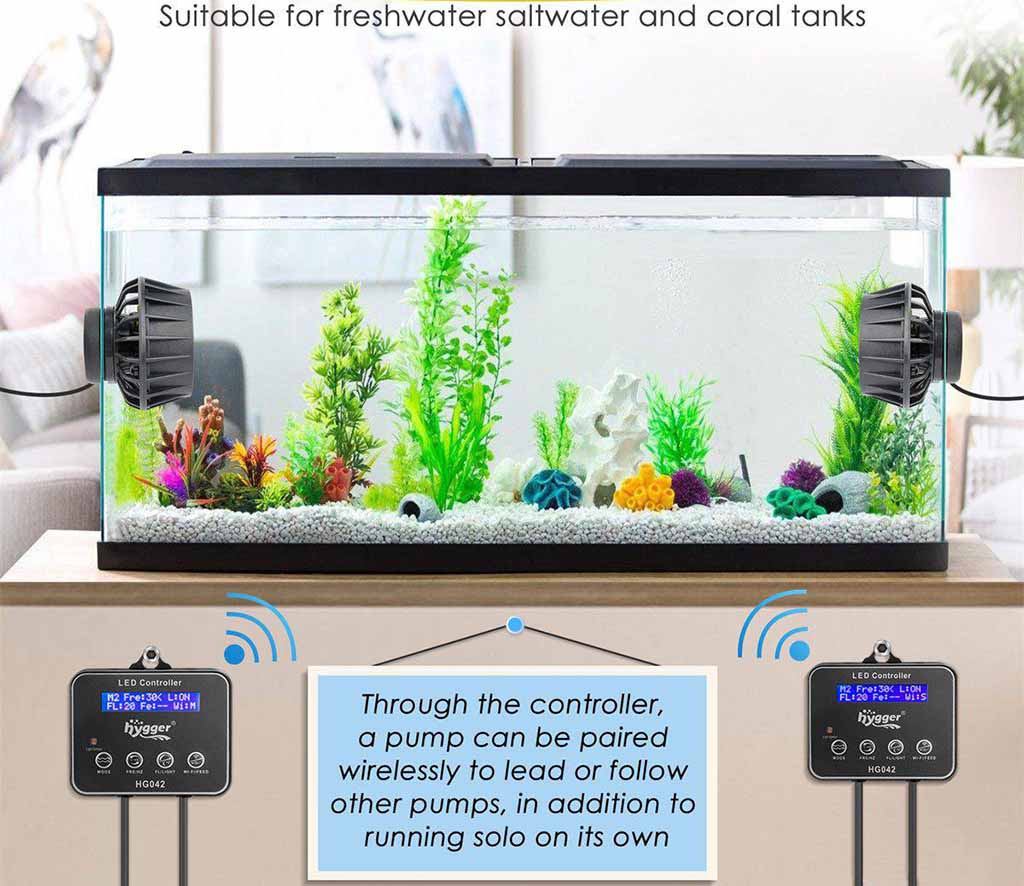
Wavemaker Pump vs Aquarium Powerhead
| Feature | Hygger 042 Wavemaker Pump | Hygger 707 Aquarium Powerhead |
| Appearance | Compact, sleek design with an impeller mechanism | Utilitarian design, focused on efficiency |
| Functionality | Creates waves, simulates natural currents | Circulates water provides oxygen, no wave creation |
| Flow Rate | Adjustable flow rate for customized setups | Variable flow rate, suitable for different aquarium sizes |
| Purpose | Ideal for reef tanks, simulation of natural currents | General water circulation, oxygenation, preventing stagnant spots in tanks |
| Surface Ripple | Produces surface ripples due to oscillating motion | Does not produce surface ripples, focused on underwater circulation |
How Many Hours in a Day Should The Pump Run
The recommended running time for the wave-making pump depends on the stage of the aquariums and the purpose of the powerhead.
Wave-Making Pump
Small Fish Stage: If the goal is to remove fish droppings, running the pump for 5 minutes every hour during the day is suggested, excluding the period from 10:00 pm to 10:00 am.
If there is no need to eliminate fish droppings, the pump can be turned on for half an hour after every meal.
Example Wavemaker Setting
If you have a small fish stage and want to eliminate fish droppings, set the wave-making pump to run for 5 minutes every hour during the day, with breaks during the night.
Powerhead
Purpose: If the powerhead is used to spread CO2, it should only operate during the day.
If it is used to enhance gas exchange for the fish, it can run at night only or continuously. However, it is important to provide areas in the tank where fish can escape the flow.
Example Powerhead Setting
The provided example mentions a powerhead on a timer, running for 20 minutes every hour and a half throughout the day and night. This powerhead also incorporates an air venturi to introduce oxygen into the water. This setting helps disperse CO2 during the day and ensures sufficient oxygen in the tank at night, particularly with a substantial fish population.
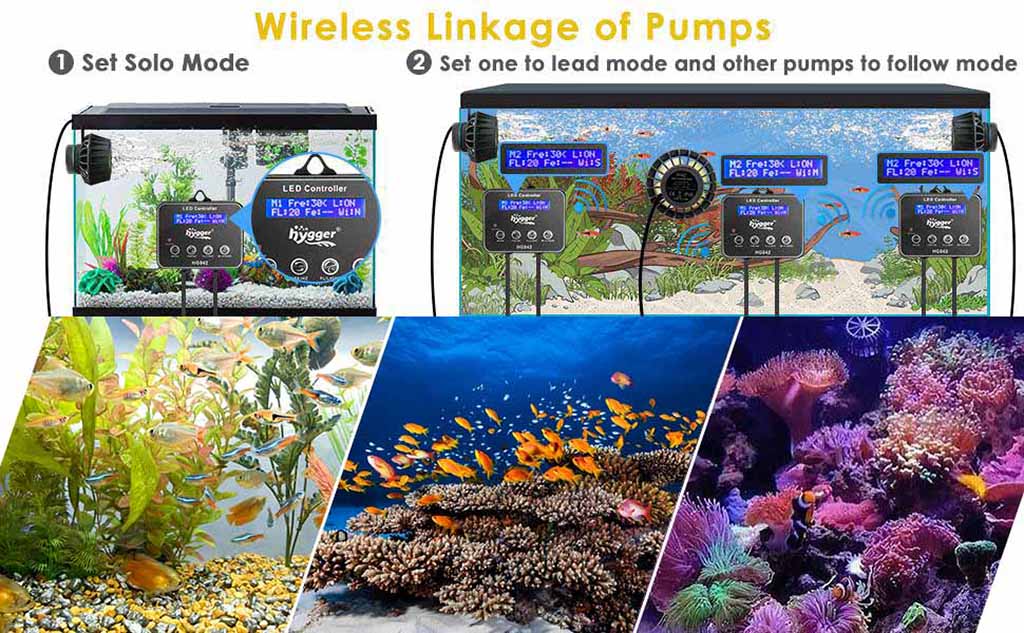
What is a Good Flow Rate For An Aquarium
Generally, an ideal flow rate is four times the size of your tank. For example, if you have a 30-gallon tank, the recommended water flow for adequate filtration would be 120 gallons per hour (GPH). This means the entire volume of the tank would “turn over” four times in one hour. Here’s a general guideline for flow rate suggestions based on the aquarium size:
| Aquarium Size | Flow Rate Range (gallons per hour) |
| 10-30 gallons | 75-150 (GPH) |
| 30-50 gallons | 150-300 GPH |
| 50-75 gallons | 300-500 GPH |
| 75-100 gallons | 500-750 GPH |
| 100-150 gallons | 750-1,200 GPH |
| 150+ gallons | 1,200+ GPH |
These are rough estimates, and it’s crucial to consider the specific needs of your aquarium’s inhabitants. Certain marine organisms, like corals, may require higher flow rates to simulate their natural environment, while others, such as fish, may prefer calmer waters.
In addition to the overall flow rate, it’s essential to create varied flow patterns within the tank. This can be achieved by using a combination of powerheads, wave makers, and return pumps to avoid dead spots and ensure proper circulation throughout the aquarium.
Remember to adjust the flow rate based on the specific requirements of the species in your tank. Some corals, for example, thrive in higher flow environments, while others prefer slower, more laminar flow. Regular observation and monitoring will help you fine-tune the flow rate to create an optimal and healthy aquatic environment for your marine tank.
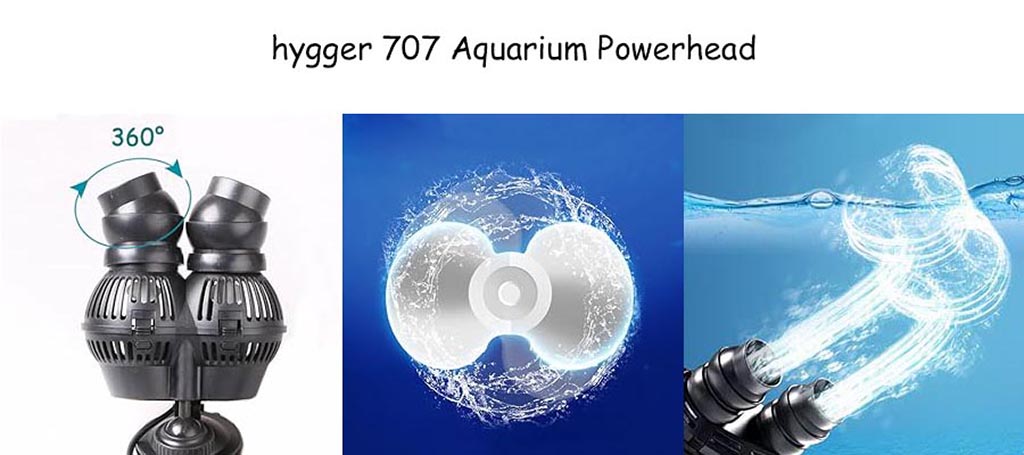
Which one is Better
A wavemaker pump may be the better option if you have a reef tank or want to replicate natural water flow. A powerhead is more suitable if you need strong and direct flow in specific areas. Consider the size of your tank, the type of aquatic life you have, and your budget when making a decision.
Each option has advantages and considerations, so it’s important to understand the differences before choosing the better one.
1. Wavemaker Pump
A wavemaker pump is designed to simulate natural wave patterns in the ocean. It creates a rhythmic water movement by alternating the flow rate and direction at regular intervals. This helps to mimic the natural environment for aquatic creatures.
| Advantages | Considerations |
|
|
2. Powerhead
A powerhead is a simple device that generates a steady and direct flow of water in one direction. It is typically used to provide strong water movement in specific areas of the tank, such as creating currents for fish to swim against or directing flow toward filtration systems.
| Advantages | Considerations |
|
|
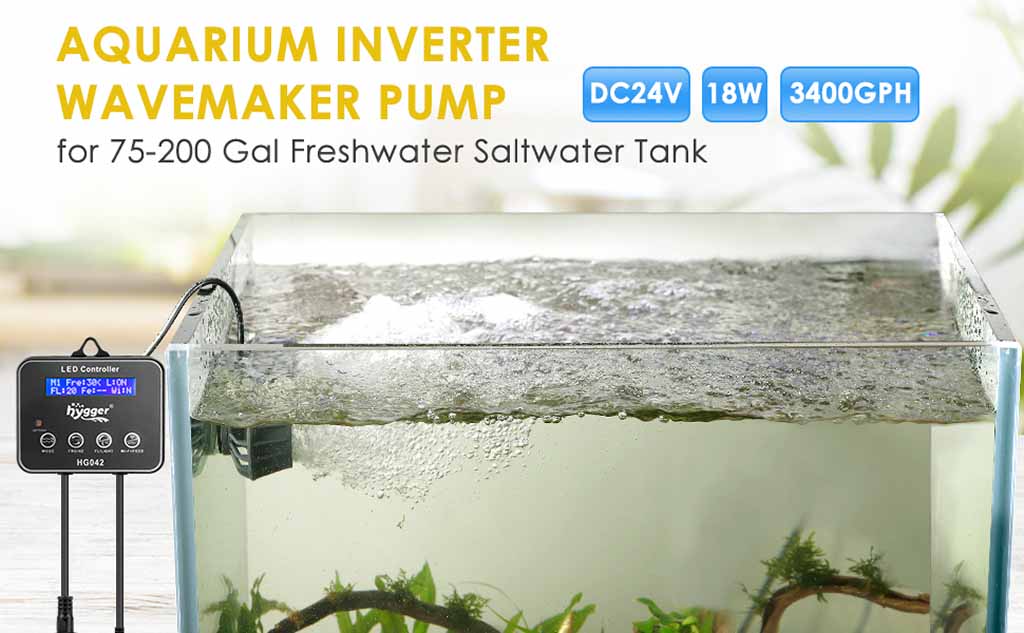
Clean Tips For Wavemaker And Powerhead
Here are some tips to help you keep them in top shape:
1. Regularly inspect and clean the impeller
The impeller is the heart of the wavemaker or powerhead, and it can get clogged with debris over time. Remove the impeller assembly according to the manufacturer’s instructions and clean it gently with a soft brush or toothbrush to remove any dirt or algae buildup.
2. Clean the housing
The housing of a wavemaker or powerhead can also accumulate dirt and algae. Use a soft cloth or sponge to wipe down the housing, making sure to remove any debris that may have settled on it.
3. Check the intake strainer
The intake strainer is designed to prevent larger debris from entering the pump, but it can get clogged easily. Regularly inspect the strainer and remove any debris that may be blocking it.
4. Rinse with fresh water
After cleaning, rinse the wavemaker or powerhead with fresh water to remove any residue or cleaning solutions. This will help prevent any potential harm to your aquarium inhabitants.
5. Avoid using harsh chemicals
When cleaning an aquarium wavemaker or powerhead, avoid using harsh chemicals or detergents, as they can be harmful to your aquarium ecosystem. Stick to using mild cleaning solutions or simply rinsing with fresh water.
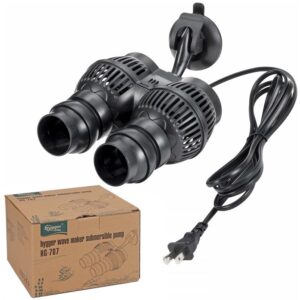
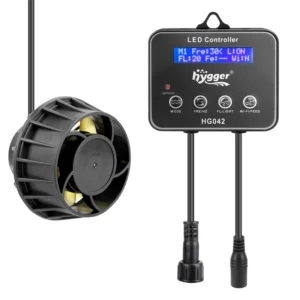
Leave a comment